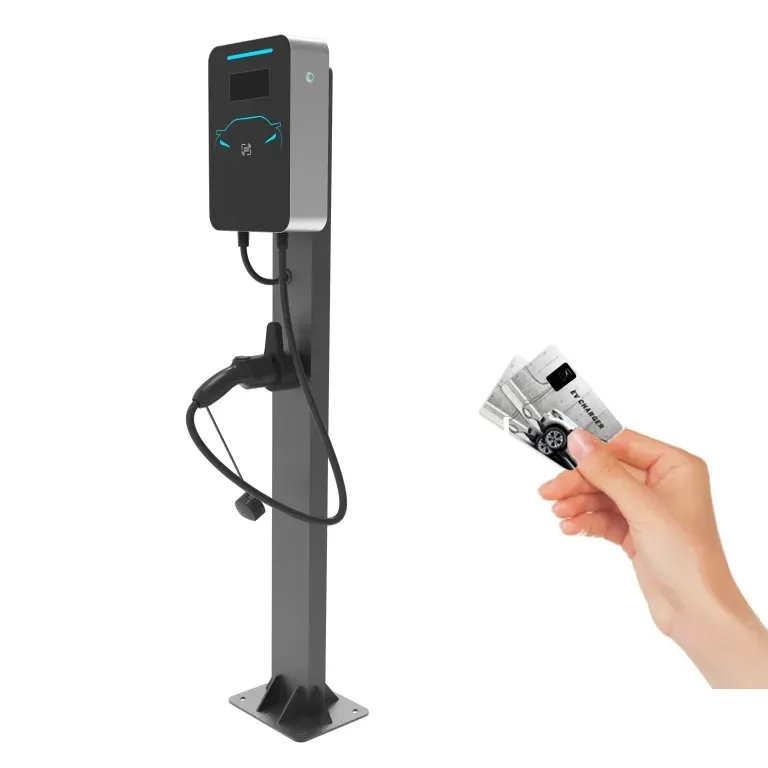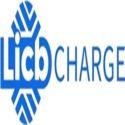Notifications

11 minutes, 6 seconds
-17 Views 0 Comments 0 Likes 0 Reviews

Introduction: Embracing Smart Charging with RFID Technology
As a leading EV charger manufacturer in China, LiCB Charge offers reliable AC and DC electric vehicle charging stations along with comprehensive charging solutions.
As electric vehicles (EVs) continue to revolutionize the global automotive industry, the demand for efficient and user-friendly charging infrastructure is growing rapidly. Among the most innovative technologies enhancing the EV charging experience, Radio Frequency Identification (RFID) stands out as one of the most convenient and widely used solutions for both public and workplace charging stations.
Whether you’re a seasoned EV owner or considering the switch to electric mobility, understanding how RFID works in EV charging can help you make more informed decisions and enjoy a hassle-free charging experience. This article dives into the fundamentals of RFID technology, its role in EV charging, and why it’s become an integral part of modern EV infrastructure.
RFID Defined
RFID (Radio Frequency Identification) is a technology that uses electromagnetic fields to automatically identify and track tags attached to objects. In the context of EV charging, an RFID card acts as a contactless key, allowing drivers to initiate or stop a charging session by simply tapping the card against the charger’s RFID reader.
These cards—also known as charging cards, key fobs, or RFID tags—contain unique identifiers linked to the driver's account. Once scanned, the charging station recognizes the user, authenticates access, and initiates billing according to the user’s selected plan or network.
Real-World Analogy
The operation of an RFID card for EV charging is akin to tapping a contactless debit or credit card to make a payment. But instead of paying for a coffee, you’re activating a high-voltage system that powers your EV battery.
This contactless system ensures fast, secure, and convenient access to charging stations, eliminating the need for smartphone apps, QR codes, or physical buttons.
RFID cards are widely used across public EV charging networks, including stations located at:
Motorway service areas
Public parking lots
Shopping malls and supermarkets
Urban centers
Office complexes and business parks
These charging stations may provide a range of charging speeds, such as:
Standard charging (AC) at 7 kW
Fast charging (AC) at 22 kW
Rapid charging (DC) at 50 kW and above
RFID cards provide EV drivers with reliable access to these stations, regardless of location, simplifying the charging experience across various networks.
RFID cards are also used in private and workplace charging setups, particularly when security, user tracking, or multi-user access is necessary. For example, fleet operators and businesses may distribute RFID cards to drivers for usage tracking, cost allocation, and accountability.
One of the key reasons RFID is so widely adopted is its interoperability. Many charging card providers have partnerships with various EV charging networks, allowing drivers to use a single RFID card to access thousands of chargers across different locations. No need to manage multiple apps or accounts.
For instance, an RFID card might grant access to chargers across Europe operated by networks like Shell Recharge, BP Pulse, Ionity, or ChargePoint, depending on roaming agreements between providers.
RFID cards are more durable than magnetic swipe cards or chip-based access systems. Since there’s no physical contact between the card and the reader, the system experiences less wear and tear, offering a longer lifespan and lower maintenance costs. RFID readers are typically integrated into weather-resistant EV chargers, making them suitable for outdoor use.
The process of using an RFID card at a charging station is simple:
Tap the RFID card on the reader embedded in the charging station.
The system identifies the user’s account and authorizes the session.
The EV charging session begins automatically.
Once charging is complete, the driver taps the card again to stop the session.
Usage data is recorded, and billing is done based on the selected plan (pay-per-use, monthly, or subscription).
RFID cards are tied to accounts managed by EV charging service providers. Depending on the network, users can access detailed reports about energy usage, track spending, and view charging history through online dashboards or mobile apps. This is beneficial for:
Individual EV drivers who want to monitor their costs
Businesses managing fleet expenses
Landlords or site operators who wish to allocate charging costs fairly
RFID cards make charging fast and easy. There’s no need to open an app, connect to the internet, or fiddle with a phone—just tap and charge. This is particularly convenient in areas with weak mobile signals or during cold weather when touchscreens may be less responsive.
Each RFID card is uniquely linked to the user's account, reducing the risk of unauthorized access. Furthermore, the contactless nature of RFID minimizes the chances of physical tampering or vandalism.
Many RFID cards are accepted across multiple networks, especially when providers participate in roaming agreements. This means a single card can be used across a wide network of chargers, regardless of the brand or provider.
Billing via RFID cards ensures transparent invoicing. Whether drivers are charged by the minute, kWh, or per session, all records are stored and accessible for review.
For commercial or shared spaces, RFID cards offer an effective way to control access. Administrators can issue cards, track usage, and restrict access when necessary. This feature is particularly useful in apartment complexes, businesses, and fleet operations.
RFID systems operate on different frequency bands, each serving a unique purpose. The most commonly used frequencies for EV charging cards include:
Low Frequency (LF): 125 or 134.2 kHz
Often used for access control and animal tracking. It has slower data rates and shorter read ranges.
High Frequency (HF): 13.56 MHz
The most common frequency for EV charging cards, offering a good balance of range, speed, and security. It complies with the widely adopted ISO/IEC 14443 standard used in smart cards and transit systems.
Ultra-High Frequency (UHF): 868 to 956 MHz
Used for longer read ranges, but less common in EV charging applications.
Microwave Frequency: 2.45 GHz
Used in specialized applications, but not standard for EV infrastructure.
Despite its many benefits, RFID technology does have some limitations:
Not all networks support RFID cards, with some relying exclusively on mobile apps or QR codes.
Roaming agreements may vary, meaning not all RFID cards work everywhere.
Lost or stolen cards can pose security risks, though many providers allow cards to be deactivated quickly to minimize misuse.
To address these concerns, many providers are combining RFID with mobile apps and real-time support, enhancing flexibility and security.
As the EV market matures, RFID will continue to be an essential component of charging infrastructure, especially in areas where mobile data coverage is limited or where quick, secure access is needed. However, emerging technologies like Plug & Charge (ISO 15118), mobile wallets, and even biometric authentication may complement or eventually replace RFID cards in some cases.
As the world transitions to electric mobility, the infrastructure supporting this shift must be intuitive, secure, and adaptable. RFID technology ticks all these boxes—providing drivers with fast, reliable access to EV charging stations without the hassle of apps or physical buttons.
Whether used by individuals at public stations or by businesses managing large fleets, RFID offers a powerful blend of convenience, control, and compatibility. Although future technologies may offer even smarter solutions, RFID remains a cornerstone of today’s EV charging experience.Know more about Google SEO Directory
China EV Chargers EV Charger Manufacturer Smart EV Chargers Electric Car Chargers Electric Vehicle Chargers Electric Car Charging Stations

